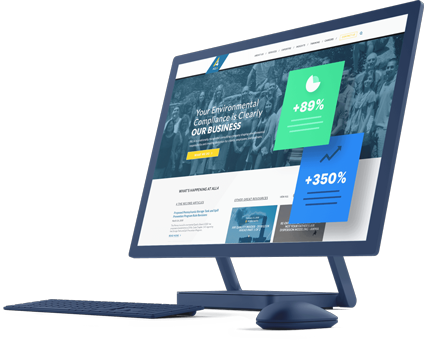What is CPM? CPM stands for cost per mille, and it measures how much you spend on your ads for every 1000 views they receive.
It goes without saying that you need to track how much you’re spending on your paid ad campaigns. If you don’t, your budget will quickly spiral out of control. The question, though, is how you’ll track how much you spend on your ads.
There are multiple ways to track your ad spend. You could track the total cost, sure. But that doesn’t give you insight into how much you’re getting for your money. That’s why there are metrics like cost per click (CPC) and cost per lead (CPL).
One of the most common spending metrics is cost per mille (CPM). But what is CPM, and how can you use it? Keep reading to find out. Then subscribe to Revenue Weekly for more tips delivered right to your inbox!
What is CPM?
CPM measures how much you spend on a paid ad per every 1000 impressions it receives. The term stands for “cost per mille,” with “mille” being the Latin term for 1000. For that reason, “cost per mille,” “CPM,” and “cost per thousand” are all interchangeable terms.
To calculate CPM, you divide the total cost of a given ad by the total number of impressions and then multiply by 1000. As a formula, it looks like this:
Total ad spend / total ad impressions x 1000
When you’re focusing on impressions, CPM is a great way of measuring how much you’re spending on your ad campaigns.
CPM vs. CPC, CPL, and CPA
CPM is excellent for putting your ad spend in perspective, but it’s not the only metric for doing that. You may have heard of some other similar terms in the past. To distinguish between them all, let’s break some of those terms down here.
- Cost per click (CPC): The amount you spend for each click an ad earns. To calculate CPC, divide your total ad spend by the total number of clicks your ad earns.
- Cost per lead (CPL): How much you spend for each lead you earn through a paid ad. To calculate CPL, divide your ad spend by the total number of leads you earn through the ad in question.
- Cost per acquisition (CPA): Also called cost per conversion, CPA measures how much you spend for each ad-driven conversion. Those conversions could be purchases, or they could be other actions, like email signups. You calculate it by dividing your ad spend by the total conversions an ad drives.
What is CPM bidding?
We’ve established what cost per mille is, but what is CPM bidding?
When you run a paid advertising campaign, you bid on specific keywords you want to target in search results, and your ads will appear for those keywords.
But you don’t automatically shell out the money you bid — you only pay in specific circumstances.
Many ads are pay-per-click (PPC), meaning you only pay for an ad when someone clicks on it. But you can also use CPM bidding, which is where you pay each time an ad gets an additional 1000 impressions.
Why use CPM bidding?
With paid advertising, the goal is often to get people to click. That’s why PPC advertising is such a common method of bidding. But sometimes, it’s more about spreading the impressions. You don’t necessarily expect everyone to click on your ads — the goal is for them to see them.
Usually, this type of goal is present in top-of-funnel marketing when you’re trying to spread brand awareness. In those circumstances, it makes more sense to bid — and measure — based on impressions, which is where CPM bidding comes in.
Essentially, you only want to pay when you make progress toward your goal. So, if your goal is to drive impressions, that’s the factor to bid on.
How to optimize your CPM
No one wants to pay more than they have to. At this point, you’re probably wondering what you can do to lower your cost per thousand.
Fortunately, there are a few ways to optimize your paid advertising and drive down costs. Here are three tips to try out.
1. Focus on shorter keywords
You may have heard before that targeting highly specific, long-tail keywords is a good idea. The idea is that it helps you get your ads in searches where you have less competition and can reach a more relevant audience.
And generally speaking, that’s good advice. But you’ll probably also find yourself targeting shorter, more general keywords from time to time. When you do, it’s a good idea to pair those keywords with your CPM bidding.
That’s because when you’re using CPM bidding, you’re trying to spread brand awareness. You’re not worried about clicks or conversions at this stage — you’re trying to get your brand in front of as many people as you can. That makes it better to target shorter, rather than longer, keywords.
2. Optimize your ads for search intent
While it’s true that your CPM keywords don’t have to be as specific as those in PPC campaigns, you still want them to be relevant. That means you need to create ads that fit well with the keywords you’re bidding on, and vice versa — you need to choose keywords that fit with the ads you’ve created.
In other words, you need to account for search intent in your CPM bidding campaigns. If you target the keyword “manufacturing services,” be sure your ads directly relate to your manufacturing services — and not, say, your consulting services.
Search intent matching decreases your CPM because Google will recognize your ads’ relevance and display them more often.
3. Use negative keywords
As we established, you want your CPM campaigns to reach a wide audience, but you still want a relevant audience. On top of optimizing for search intent, another strategy is using negative keywords in Google Ads.
Negative keywords are terms you tell Google not to show your ads for. For instance, let’s say you’re selling household electric fans, so you target keywords related to fans. But then Google shows your ads in searches for industrial fans, which isn’t what you sell.
To avoid wasting impressions on the wrong audience, you can add “industrial” as a negative keyword, ensuring that Google doesn’t show your ads for any searches that include that word.



